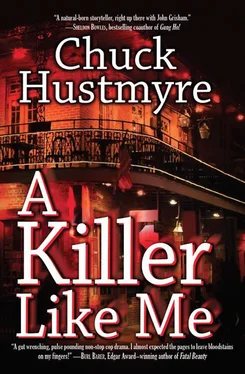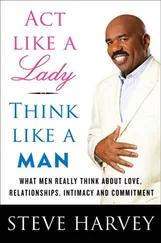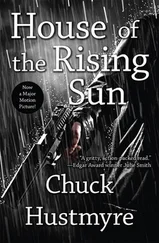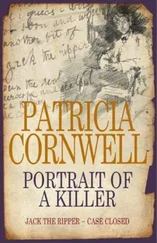Chuck Hustmyre - A Killer Like Me
Здесь есть возможность читать онлайн «Chuck Hustmyre - A Killer Like Me» весь текст электронной книги совершенно бесплатно (целиком полную версию без сокращений). В некоторых случаях можно слушать аудио, скачать через торрент в формате fb2 и присутствует краткое содержание. Жанр: Триллер, на английском языке. Описание произведения, (предисловие) а так же отзывы посетителей доступны на портале библиотеки ЛибКат.
- Название:A Killer Like Me
- Автор:
- Жанр:
- Год:неизвестен
- ISBN:нет данных
- Рейтинг книги:4 / 5. Голосов: 1
-
Избранное:Добавить в избранное
- Отзывы:
-
Ваша оценка:
- 80
- 1
- 2
- 3
- 4
- 5
A Killer Like Me: краткое содержание, описание и аннотация
Предлагаем к чтению аннотацию, описание, краткое содержание или предисловие (зависит от того, что написал сам автор книги «A Killer Like Me»). Если вы не нашли необходимую информацию о книге — напишите в комментариях, мы постараемся отыскать её.
A Killer Like Me — читать онлайн бесплатно полную книгу (весь текст) целиком
Ниже представлен текст книги, разбитый по страницам. Система сохранения места последней прочитанной страницы, позволяет с удобством читать онлайн бесплатно книгу «A Killer Like Me», без необходимости каждый раз заново искать на чём Вы остановились. Поставьте закладку, и сможете в любой момент перейти на страницу, на которой закончили чтение.
Интервал:
Закладка:
A neighborhood canvass produced half a dozen suspect descriptions. After putting them together, Murphy had a good idea who he was looking for: a short, tall, fat, thin, white, black man in his early twenties to his late fifties, who had been driving a van, riding a bicycle, jogging, and walking a dog.
One neighbor saw the dog take a dump in the yard and suggested Murphy test the poop for DNA.
The coroner’s investigator gave the bodies a quick examination before bagging them.
Unofficially, he confirmed the boy had been raped. The little girl showed no signs of sexual assault.
The mother had been sodomized and raped with something large and sharp, in all likelihood the bloody butcher’s knife on the kitchen counter.
Lab results would take a few days, a forensic technician said, but he told Murphy not to count on fingerprints. There didn’t appear to be any on the boy’s neck or on the handle of the knife.
As the word had spread about the horrific triple murder, local reporters formed a phalanx at the end of the driveway. Then the networks showed up-CNN, NBC, Fox, CBS-as well as news stations from as far away as Mobile, two and a half hours east of New Orleans. The scent of serial murder was in the air.
Captain Donovan and Assistant Chief DeMarco showed up and stood in front of the TV cameras. They talked a lot but said little, though DeMarco was finally forced to admit that several recent homicides now looked like the work of a single killer.
“Is that the same thing as a serial killer?” one reporter quipped.
“Yes, a single killer,” DeMarco repeated, ignoring the distinction and the reporter’s mocking tone.
At midnight, the crime lab called Murphy’s cell phone. The preliminary examination of the package the newspaper had received was complete. There were no prints on the envelope or the letter. A fingerprint taken from the severed finger had come back to a young black woman with several arrests for prostitution. The Bureau of Identification was working on getting a picture from her rap sheet to compare it to photos taken of the dead woman found under the Jeff Davis overpass.
By 2:00 AM the rank and the reporters were gone.
Murphy and Gaudet spent the next several hours helping the crime-lab techs comb the house for evidence. They vacuumed the carpet for hair fibers, bagged the kids’ bedding and all the rugs in the house, and took a laptop computer. They also collected every scrap of paper they could find-mail, receipts, bills, notes and pictures from the refrigerator, an address book, even the little girl’s diary.
At 9:00 AM, after fifteen hours at the crime scene, Murphy drove his beat-up Toyota to the coroner’s temporary, post-Katrina office-a old funeral parlor in Central City.
The sign out front that identified the business as the Rivas and Colbert Funeral Home had been covered with a blue FEMA tarp. The only indication of what the building was currently being used for was a sheet of printer paper taped to the glass front door that said ORLEANS PARISH CORONER’S OFFICE.
Murphy pulled open the door and walked inside. The building smelled like mildew, rotting flesh, and formaldehyde.
To maintain the chain of custody for any evidence recovered from a homicide victim’s body-bullets, hair, fibers, skin-a detective had to be present for the autopsy. Like every police cadet, Murphy had been introduced to autopsies while he was in the academy, but since he first developed an interest in homicide investigation, he had become a student of the procedure.
He learned that the Egyptians had conducted detailed examinations of the dead. As had the Chinese. He read that a Roman physician had examined the body of Julius Caesar and found that only one of the dictator’s twenty-three stab wounds had been fatal. The doctors of antiquity were fascinated with death, Murphy discovered, and because of their fascination, the emerging science of medicine had learned much about what caused it.
Unfortunately, after the collapse of the Roman Empire, Europe was plunged into the Dark Ages and much of that knowledge was lost. Over the intervening centuries, the subject of death became taboo.
The term autopsy came from the Greek word autopsia, meaning to see for oneself. In 1761, as Europe was emerging from its self-imposed darkness, Italian physician Giovanni Morgagni was the first to catalog autopsy procedures in his classic five-volume work, The Seats and Causes of Diseases Investigated by Anatomy. Murphy had read an English translation. In Morgagni’s day, autopsies were a blood-soaked, messy business. During the last two and a half centuries, they hadn’t changed much.
Still, Murphy was fascinated by them.
No matter how gruesome the autopsy, Murphy had always managed to keep the contents of his stomach down. His partner wasn’t so lucky.
While witnessing his first autopsy as a homicide detective, Gaudet had heaved up his breakfast of scrambled eggs and sausage soaked in ketchup. Although blowing chow at a crime scene or an autopsy was usually enough to get a rookie homicide detective booted out of the unit, that didn’t happen in Gaudet’s case. For one, he was twice the size of most of the other detectives. For another, he was a very likeable guy: funny, tireless, gifted with great street sense, and absolutely fearless.
Murphy didn’t begrudge his partner his weak stomach. After years of working together, they had devised a division of labor that favored each other’s strengths. Murphy covered the autopsies while Gaudet finished at the crime scene or followed up on promising leads. This morning the crime-scene work was done, but Gaudet had still begged off on the autopsies. He claimed he had to go to court, so he went home for a shower and clean clothes.
Murphy hadn’t pressed Gaudet on his court appearance. Witnessing a child autopsy was tough for any detective, even Murphy. Sitting through a pair of them was going to be nearly unbearable.
When Murphy walked into the autopsy room, formerly the funeral parlor’s embalming studio, the dead woman, thirty-six-year-old Carol Sue Spencer, lay on her back on a stainless-steel examination table. The concave surface and rimmed edge of the table were designed to keep blood and other bodily fluids from spilling onto the floor. The table tilted slightly downward toward a drain at the foot. A hose with a spray nozzle was attached to the table and used to wash away the gore.
After each autopsy the medical examiner or an assistant hosed down the table and prepared it for a fresh body. In New Orleans, a city that year after year ranked as one of the deadliest in America, there was never a shortage of bodies.
As Murphy approached the table, he inhaled a putrid blend of blood, bile, and disinfectant. To Murphy, it was the smell of death.
Longtime Orleans Parish coroner Dr. Francis Maynard was handling the autopsy personally. Also in the room was one of his technicians, a thin black woman in green scrubs. Murphy guessed she was in her early twenties. As interesting as Murphy found the whole postmortem process, he couldn’t fathom why anyone would want to do this for a living, especially for a technician’s pay, which he guessed wasn’t much above minimum wage.
Dr. Maynard stood beside the table, near the center. He was in his midsixties, with gray hair and a jowly face that shook like Jell-O when he spoke. He wore a stained white lab coat and a pair of safety glasses to protect against blood splatter. Maynard had been instrumental in identifying hundreds of bodies after Hurricane Katrina.
Since the storm, the doctor looked worn out, Murphy thought.
Maynard started an audio recorder and adjusted the microphone that hung over the table. Then he began removing what little clothing Carol Sue Spencer had been wearing when her body was discovered. The doctor described each article as he removed it-one blue T-shirt with Nike logo, one black sports bra, one pair of blue and white New Balance running shoes, and one pair of white cotton socks. The technician stuffed the clothing into a paper bag and handed it to Murphy.
Читать дальшеИнтервал:
Закладка:
Похожие книги на «A Killer Like Me»
Представляем Вашему вниманию похожие книги на «A Killer Like Me» списком для выбора. Мы отобрали схожую по названию и смыслу литературу в надежде предоставить читателям больше вариантов отыскать новые, интересные, ещё непрочитанные произведения.
Обсуждение, отзывы о книге «A Killer Like Me» и просто собственные мнения читателей. Оставьте ваши комментарии, напишите, что Вы думаете о произведении, его смысле или главных героях. Укажите что конкретно понравилось, а что нет, и почему Вы так считаете.












